
How And Why To Use Palo Santo Wood
Palo santo is much more than an aromatic incense. Its unique spiritual properties make it a powerful purifier and cleansing agent that can help enhance your yoga sessions, meditation, and much more.
Palo santo has become increasingly popular all over the world, as a daily incense, a cleansing agent or purifier, and to help accompany spiritual ceremonies and rituals. But, what exactly is palo santo, and how can we go about getting the most out of this precious and sacred wood?
Read on for a detailed overview of palo santo, its benefits, and how to use it.
What Is Palo Santo Wood and Where Does It Come From?

Palo santo, or Bursera graveolens, is a wild tree native to many regions of South America. It grows naturally in dry rainforests in places like Mexico, Venezuela, Peru, Ecuador, Colombia, and more.
The tree produces a very fragrant wood that’s often used as incense. The resin or oil collected/derived from the palo santo tree can also be used for holistic purposes. Palo santo (which means “holy wood” in Spanish) plays a very important role in many Latin American cultures.
What Does Palo Santo Wood Smell Like?
Pinpointing and describing the smell of palo santo can be difficult. Its aroma is probably best described as woody and musky, with hints of lemon, pine, and spice (similar to the spice notes of incense). Some people also describe the smell of palo santo as slightly minty, or slightly reminiscent of sage and eucalyptus.
Its particular aroma and deep roots in South American cultural and spiritual practices make it a popular choice for “smudging”, a healing process that involves cleansing a space, object, or person with herbal smoke.
The Effects of Palo Santo Wood
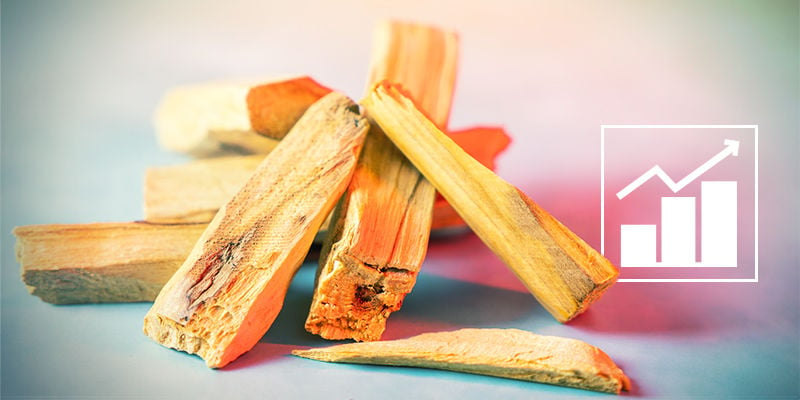
Palo santo has a variety of uses, all of which are regarded for producing their own unique effects and benefits. Below you’ll find a basic list of some of the effects of palo santo in different settings.
Functional Benefits of Palo Santo Wood
-
Palo santo wood (which can come in sticks, chips, or powder) can be burned to release aromatic smoke and used as incense.
-
Similarly, palo santo resin can be used as incense by burning it on a heated piece of charcoal. Palo santo oil can also be burned in an oil burner and used during aromatherapy, or to help promote relaxation during yoga and meditation.
-
Palo santo oil can be applied topically to the skin during massage therapy, or to relieve post-workout muscle soreness or localised discomfort.
-
Palo santo oil and wood are often used as a natural mosquito repellent. Studies have shown that palo santo essential oil is rich in limonene, a terpene with insecticidal properties used in many commercial mosquito repellents.
Ceremonial Benefits of Palo Santo Wood
-
Arguably one of the most common uses of palo santo is smudging. This is most commonly done by burning palo santo wood and letting the smoke wash through a room or over a person/object. Many believe that smudging can help clear negative energy and help replenish positive energy.
-
Many people find burning palo santo wood, oil, or resin to be relaxing, which has earned it a place in countless spiritual rituals and ceremonies, such as ayahuasca retreats. This, again, could come down to the fact that palo santo is so rich in limonene, which has been studied for its potential as a tension-reliever.
Is Palo Santo Wood Toxic?
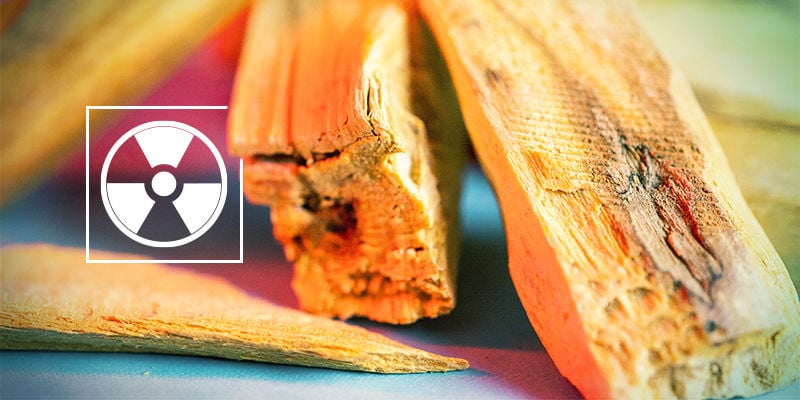
Many people worry about palo santo being toxic, especially for pets and children. Because Bursera graveolens hasn’t been studied for toxicity, we recommend you always keep your palo santo out of reach from kids and pets, especially if you’re using concentrated forms (like oil or resin).
Can Palo Santo Make You High?
This question gets asked a lot. And the answer is no; inhaling palo santo smoke, or fumes from an oil burner, won’t make you high. Nor will rubbing palo santo oil on your body. That’s because palo santo doesn’t contain any intoxicating compounds.
How To Use Palo Santo Wood
Explore how to use palo santo wood or essential oil to bring limonene and a host of other aromatic chemicals into any room.
How To Burn Palo Santo Sticks
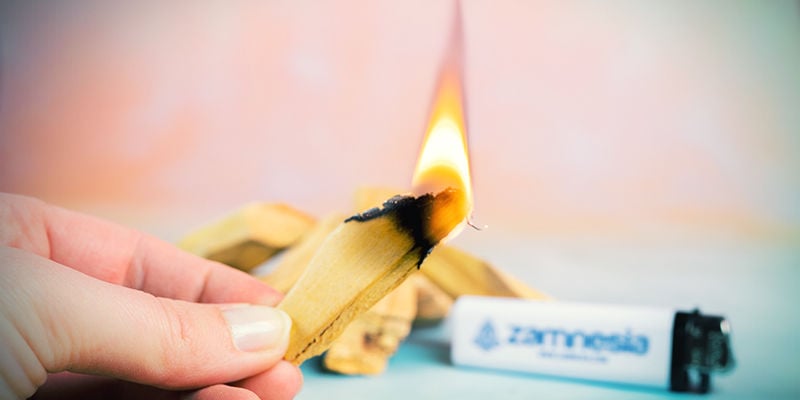
-
Burn the end of a palo santo stick with a lighter.
-
Let the stick burn for about a minute, then blow it out and let it rest on a plate or incense burner.
-
To cleanse a room with palo santo, take the smoking stick in your hand and walk around the room. Let the smoke waft throughout the area, and make sure to stand for 30 seconds to a minute in each corner of the room.
It’s worth noting that the term “smudging” refers to a specific ritual performed by indigenous cultures, and using the term to describe merely cleansing a room with smoke is generally seen as disrespectful.
How To Burn Palo Santo Essential Oil
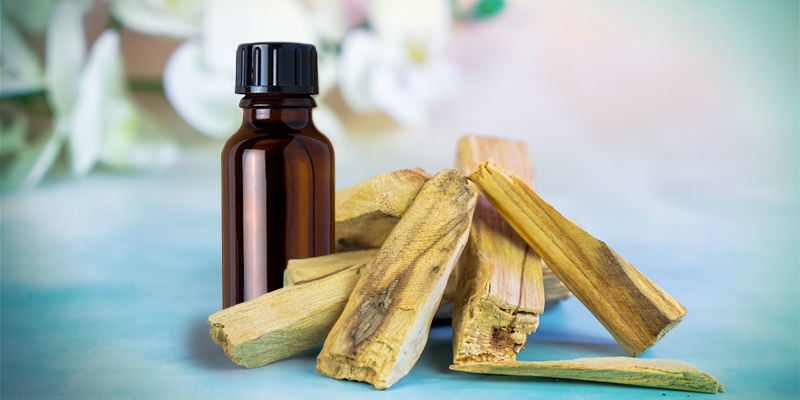
-
Fill the recipient of your oil burner with warm water.
-
Place 3–10 drops of palo santo oil in the water, depending on the strength of your oil and how strong you want the smell to be.
-
Light a candle and place it under the water recipient. As the water evaporates, it will slowly release the aroma of the oil.
How To Store Palo Santo Wood
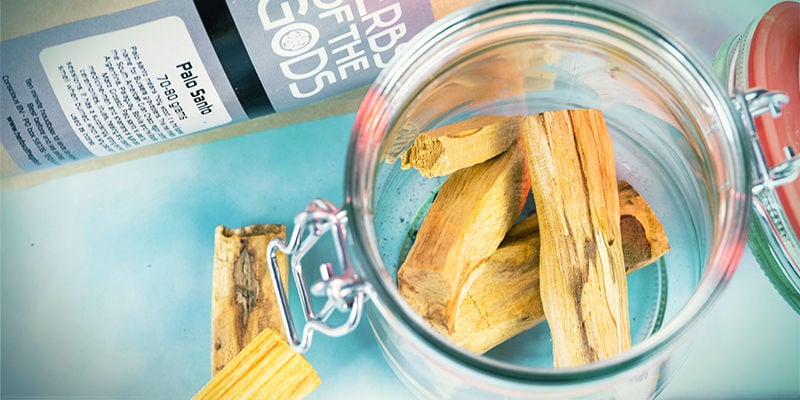
If you’re using palo santo wood or resin, we recommend storing it in an airtight container, such as a mason jar, sealable Tupperware container, or zip-lock bag. This will help preserve the aroma of the wood for longer. Keep in mind that, like other types of natural incense, the aroma of palo santo naturally deteriorates over time.
If you’re using palo santo oil, on the other hand, we recommend storing it in a small dropper. Remember to properly close the lid after every use, and store the dropper in a cool, dark place to help preserve the natural aroma of the oil for as long as possible.
Palo Santo Wood vs Sage

Palo santo and sage are both popular types of natural incense and commonly used for smudging. And, while many people may use the two interchangeably, they are very different.
White sage, or Salvia apiana, is an evergreen perennial shrub in the mint family. When burned, it’ll release a notably more herbal and floral aroma.
Many people consider white sage to be more powerful than palo santo for cleansing or smudging. A common practice when cleansing a room, for example, is to use sage to completely cleanse the space, and then follow up with palo santo to help bring positive energy back into the space.
We find palo santo is a great everyday incense that can help revitalise your home and fill it with positive energies. On the other hand, we recommend using sage more sacredly for situations when you really want to cleanse a space.
How To Tell if Palo Santo Wood Is Real
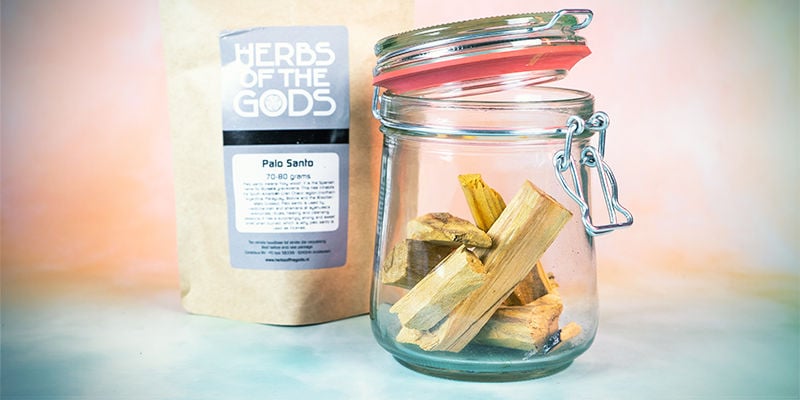
When checking the quality of palo santo, pay attention to:
-
Aroma: Check the description of how palo santo smells above.
-
Smoke and burn: Palo santo sticks burn quickly and produce a thick, white, and very aromatic smoke.
-
Texture: Palo santo is a soft wood, and will cut or break easily under a knife (depending on the thickness of the stick).
Like with any spiritual product, we always recommend buying your palo santo from a respected retailer. At the Zamnesia webshop, we stock high-quality natural palo santo, with all the aromatic and spiritual properties that make this holy wood so popular.
- d'Alessio PA, Bisson JF, & Béné MC. (2014 Apr). Anti-stress effects of d-limonene and its metabolite perillyl alcohol - PubMed - https://pubmed.ncbi.nlm.nih.gov
- Monzote L, Hill GM, Cuellar A, Scull R, & Setzer WN. (2012 Nov). Chemical composition and anti-proliferative properties of Bursera graveolens essential oil - PubMed - https://pubmed.ncbi.nlm.nih.gov
-
 3 min
May 10, 2021
Will Incense Get You High?
Incense sticks contain all sorts of herbal ingredients, many of which possess phytochemicals—including terpenes—that produce subtle shifts in human consciousness. However, other plants produce much...
3 min
May 10, 2021
Will Incense Get You High?
Incense sticks contain all sorts of herbal ingredients, many of which possess phytochemicals—including terpenes—that produce subtle shifts in human consciousness. However, other plants produce much...
-
 3 min
September 8, 2020
How To Make Herbal Incense To Create A Relaxing Atmosphere...
Making incense sticks is an easy process. Simply by following our directions, you can make amazing creations that set the mood with incredible scents.
3 min
September 8, 2020
How To Make Herbal Incense To Create A Relaxing Atmosphere...
Making incense sticks is an easy process. Simply by following our directions, you can make amazing creations that set the mood with incredible scents.
-
 1 min
November 6, 2017
Best Incense For Relaxation And Sleep
Here at Zamnesia, we bring you all sorts of herbs. Herbal incense is a safe and cost-effective way to unwind. Discover our best varieties of incense for easing the mind, body and soul.
1 min
November 6, 2017
Best Incense For Relaxation And Sleep
Here at Zamnesia, we bring you all sorts of herbs. Herbal incense is a safe and cost-effective way to unwind. Discover our best varieties of incense for easing the mind, body and soul.
-
 1 min
January 8, 2016
The Origins of Nag Champa Incense
Nag Champa is a unique blend of herbs used to create that iconic incense smell. Its use is so widespread that its smell became intimately linked to incense - though it is used in many other products.
1 min
January 8, 2016
The Origins of Nag Champa Incense
Nag Champa is a unique blend of herbs used to create that iconic incense smell. Its use is so widespread that its smell became intimately linked to incense - though it is used in many other products.








 United States
United States








